
ebuilding multiple bridges simultaneously, renovating remote roads and school buildings, and upgrading airport property on the double marked 2020’s top projects.
“One of the bright spots in all this craziness has been the resilience and dedication of the construction industry,” said Parker, Smith & Feek Excellence in Construction award presenter, Lynne Seville, on November 12 during the Associated General Contractors of Alaska virtual annual conference.
While most of the conference was held strictly online, Seville and her cohorts at Parker, Smith & Feek, along with AGC of Alaska staff, went the extra mile to ensure that the winners of one of the association’s most prestigious awards got an extra treat. AGC of Alaska staff dropped surprise “Watch” baskets full of local or locally made goodies and some AGC swag to the offices of each company that entered the Excellence in Construction category. Seville, before announcing the winners, encouraged them to have an ear open for a knock on the door, as each winning entrant received a special gift basket from Parker, Smith & Feek with champagne and chocolates to aid in the celebration.
The gift baskets were in addition to the one-of-a-kind award that representatives from AGC member companies KLEBS Mechanical, Anchorage Sand & Gravel Co. Inc., and Mahtava, LLC helped design. A fused-glass, modern representation of a surveyor’s theodolite, the award stands on specially quarried Alaska rock.
“This is a device that looks into the distance, the future extent of a project, kind of like we’re all looking toward our future right now and what that’s going to be,” says Seville.

Project: LYSD Longhouse Renovation

In July 2019, Roger Hickel Contracting (RHC) won the Lower Yukon School District Longhouse renovation project. The project scope consisted of renovating a central longhouse building, which included demolishing existing fixtures, finishes, walls, and shear wall systems and (most challenging) installing new structural support systems for the first and second floors. The crew also replaced all windows; built new interior walls, restrooms, and a serving area; modified the sprinkler, mechanical, and electrical systems; installed new finishes throughout; and installed new classroom furniture.
It was a race against the clock, says RHC Project Manager and Estimator Mark Powers. The project had a two-month turnaround and a complex problem to solve: How to get the large support beams into place within a three-foot crawlspace with as little disruption to the main structure as possible. Originally, Powers says, the team thought it would be necessary to dig a trench in front of the building and slide the new support beams through a hole in the exterior wall—a pretty invasive and costly solution. Fortunately, Powers and the project superintendent brainstormed a workaround that included removing a window and, using two double-tired, swiveling casters, rolling the heavy beams in place in the three-foot crawlspace. The project team then used modified high-lift jacks to lift the beams into place and secured them precisely with bottle jacks.
“It wasn’t just coming up with an idea and writing on paper and it happens,” Powers says. “It was more hands-on, trying to figure it out. You couldn’t necessarily do it on paper, you had to get out there and see it.”
Powers says it was RHC’s first time working with the Lower Yukon School District but the design team and owner were a pleasure to work with, as was AGC member company Bettisworth North, which was the project architect.

Project: Marriott Renovations: Residence Inn, Springhill Suites, and Courtyard Marriott

After running thousands of guests through the three Anchorage Marriott properties, they were overdue for a refresh. Davis Constructors & Engineers, Inc. was selected in 2018 to complete the work—which it did on time, within budget, and without negative impacts to hotel guests. Davis’ design-build approach and value engineering ideas were crucial to the projects’ success. Davis and JL Properties partnered up to help Davis gain knowledge about each property before swinging the first crowbar. The properties remained open during the upgrades, where Davis’ continuous management of the schedule and notifications to the owner and guests during a busy tourist season were exceptional.
“Davis appreciates the opportunity to showcase our projects and are thankful for our clients, employees, subcontractors, and vendors who make it all happen,” says Luke Blomfield, president of Davis Constructors.

Project: New Medline Anchorage Distribution Center
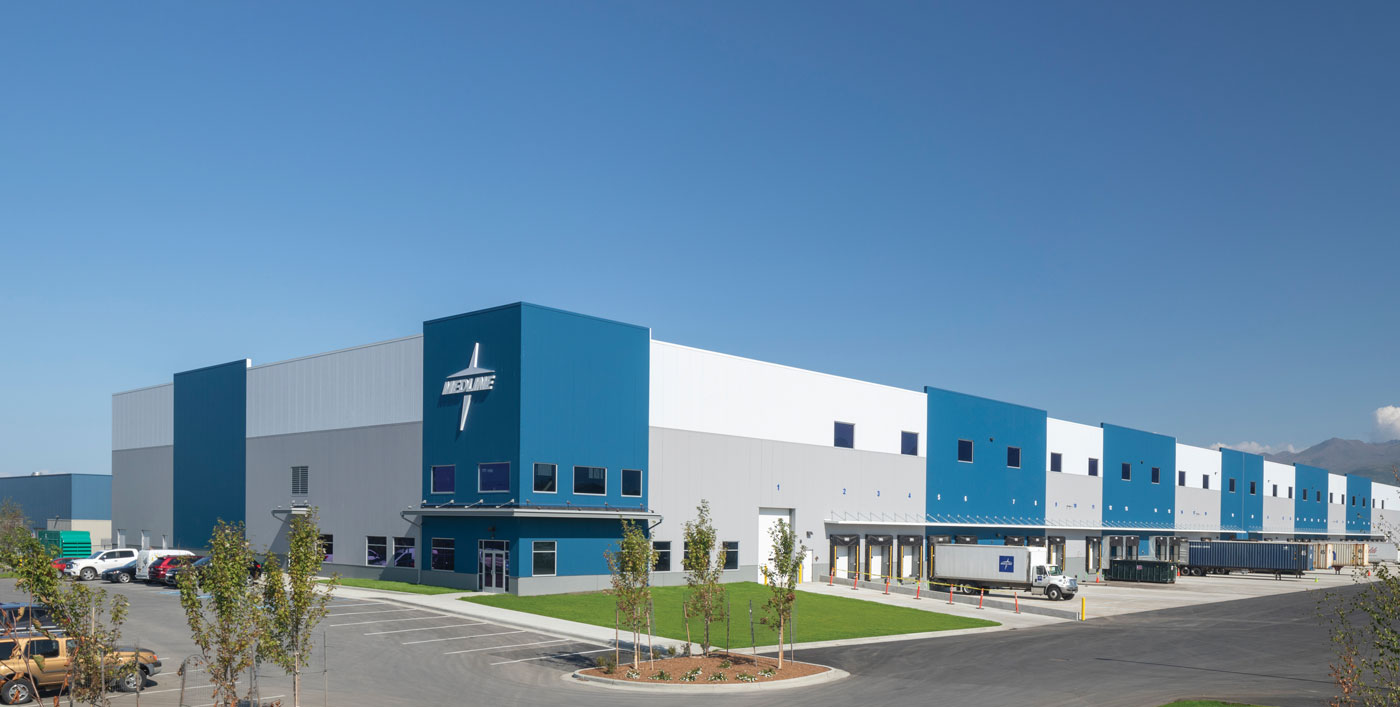

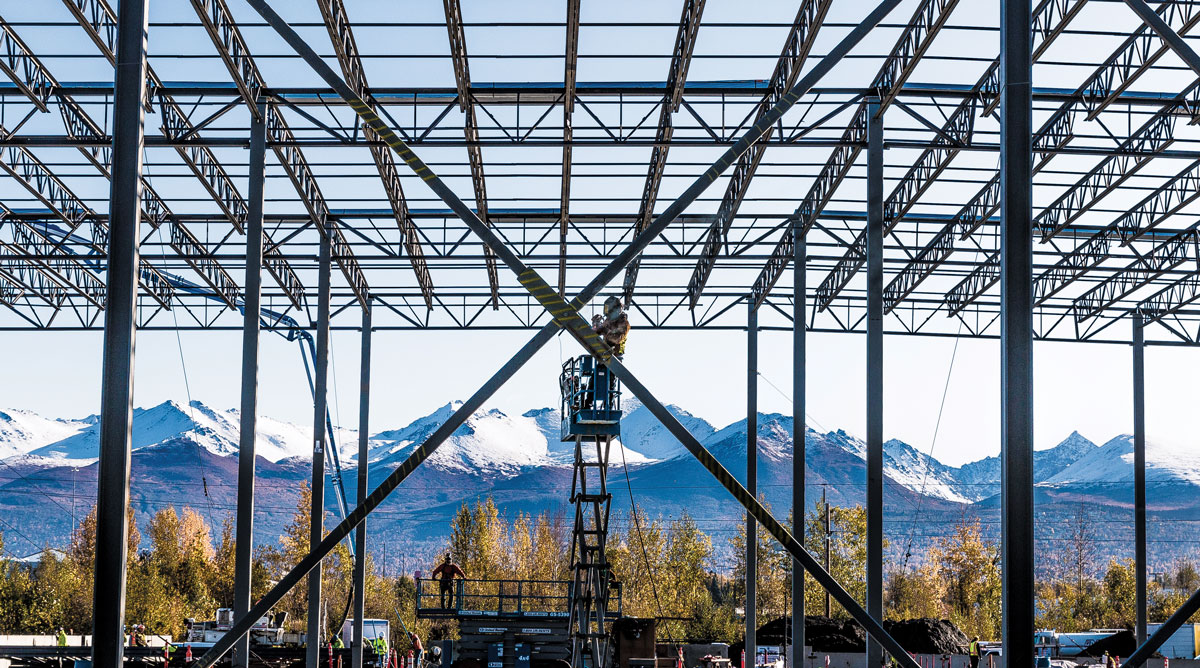

When it came time to find a partner in the design-build process, Medline looked to Cornerstone for leadership. Cornerstone guided local design and contracting partners to build the new 150,000-square-foot Medline Warehouse in South Anchorage. It features thirty-two loading bays, two mezzanines, administration offices, and custom racking. Despite challenges that arose from the 2019 wildfires and the 2020 pandemic, Cornerstone completed this project ahead of schedule and under budget. Cornerstone worked with AGC member company CRW Engineering and also with GMC Contracting to remove more than 63,000 cubic yards of peat from the site. The result is a substantial capacity increase for supplies for the local medical community.
“The project was challenging in many ways, including the quick pace and coordination of subcontractors here in Alaska and specialty contractors out of state, but it was rewarding to hand over the facility to an eager and satisfied owner,” says Rick Garrett, Cornerstone’s Medline Warehouse site superintendent.

Project: Shishmaref Sanitation Road Emergency Repairs
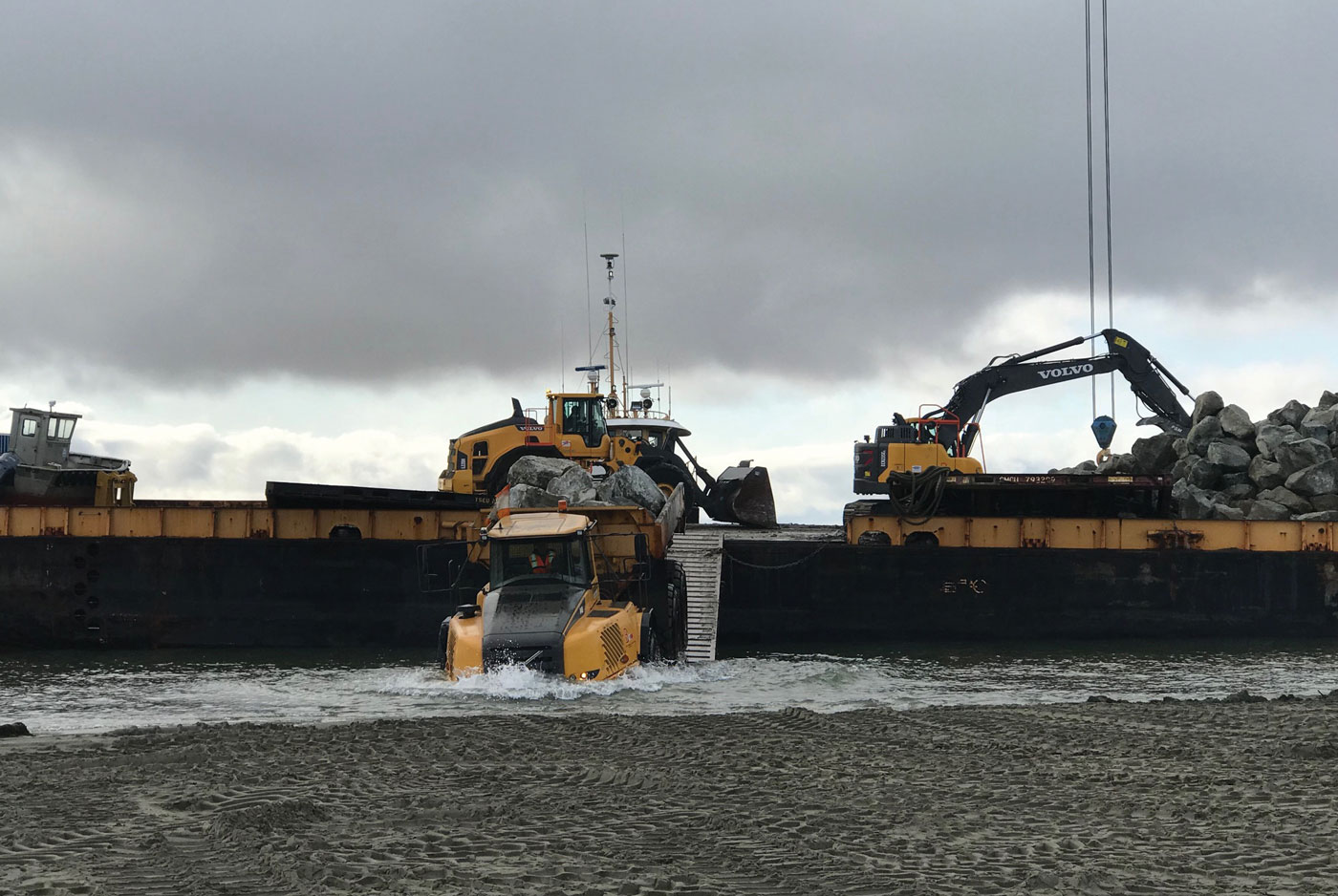
This $2.55 million project administered by the Alaska Department of Transportation & Public Facilities was to build approximately 2,000 feet of revetment, repairing Shishmaref’s Sanitation Road, which was badly damaged during a storm in 2013. Shishmaref is located adjacent to the Chukchi Sea and has had erosion issues stemming from highly volatile conditions. Approximately 3,800 cubic yards of armor rock and 2,500 cubic yards of filter rock, in addition to native embankment fill was used to repair the most severely impacted areas per the Federal Emergency Management Agency grant. The rock was mined and processed in Nome, loaded on an articulated tug and barge, and hauled to Shishmaref.
“It wouldn’t have been a successful project without all the local community involvement from local residents helping out as workers on the project,” says Derek Gilbertson, Brice’s estimator and project manager for the project.
Gilbertson says receiving the Excellence in Construction award is an honor.
“It motivates the crew to see that their work is appreciated, both in the community and outside, throughout Alaska,” he says.

Project: North Tongass Bridge Improvements – Waterfall Creeks
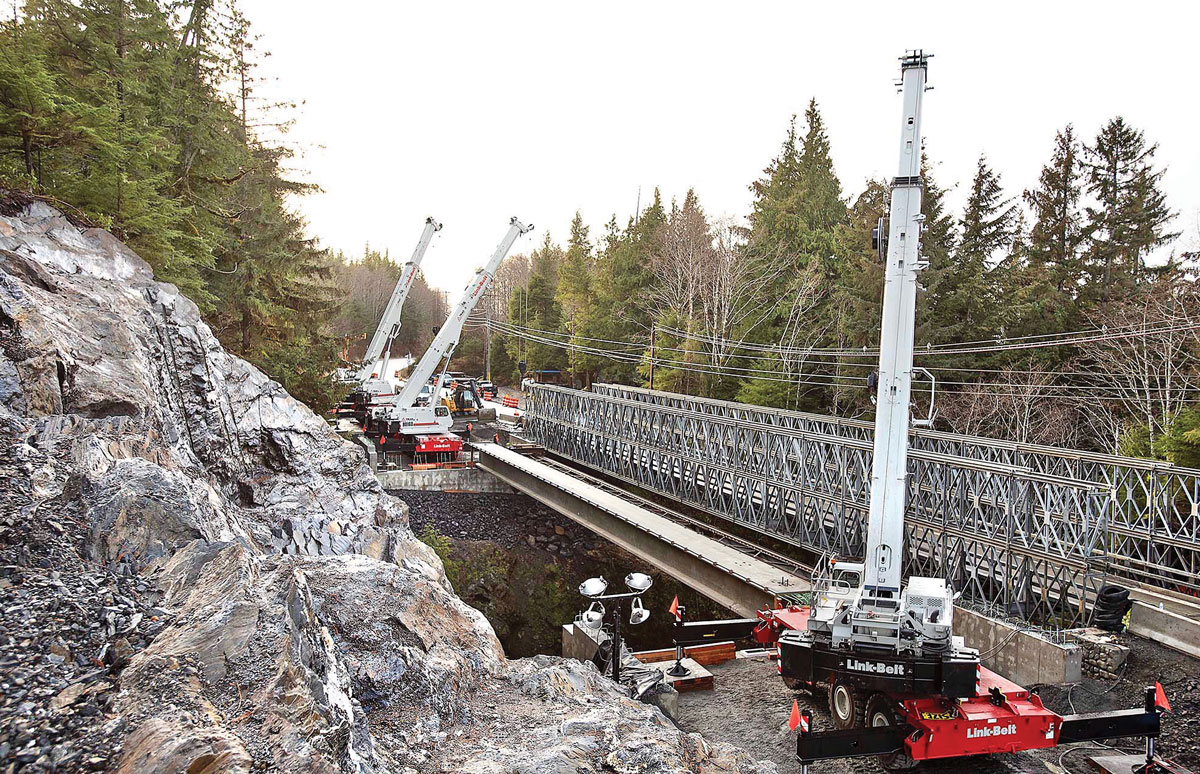
Orion built two bridges restoring a vital connection on the Tongass Highway over very deep ravines in Ketchikan. To effectively and safely build the bridges, the team deployed the longest self-launching temporary bridge ever installed over water in the state of Alaska. Combining the launch system with a fleet of three cranes allowed safe passage of the traveling public through the construction zones. Orion’s efforts, along with an initiative to remove all invasive plant species on the site, provided the Ketchikan community with a safe and ecologically diverse travel corridor.
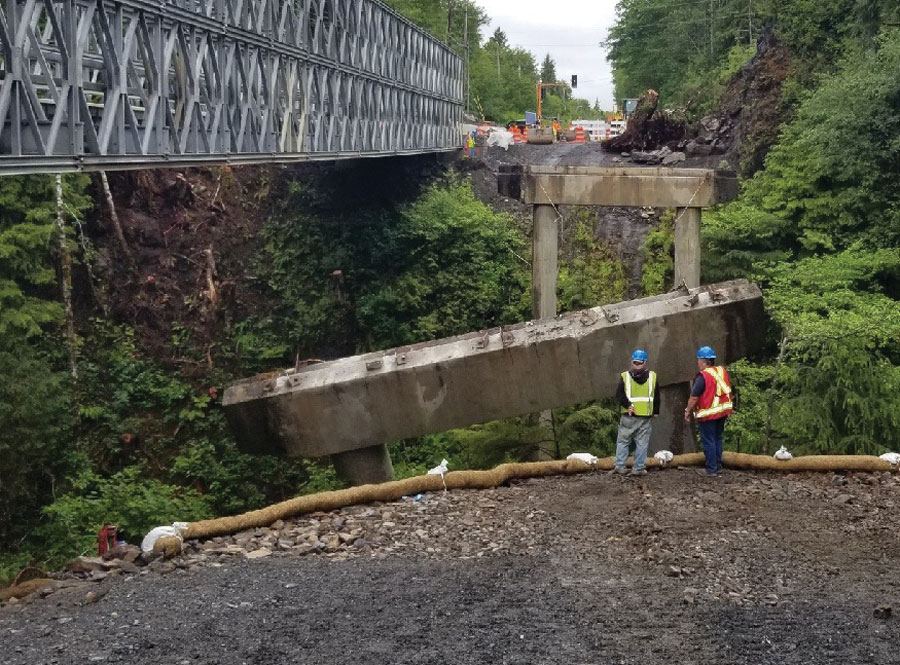
“Orion is pleased to receive the award in recognition of the hard work that our employees and subcontractors did to ensure the completion of the project. We would also like to thank the DOT, City of Ketchikan and the businesses in Ketchikan for assisting us with completing the project in a safe manner and on time,” says Orion Marine Operations Manager Dave Banke.

Project: Juneau International Airport – Taxiway A Rehabilitation, Taxiway D-1 Relocation, & Taxiway E Realignment
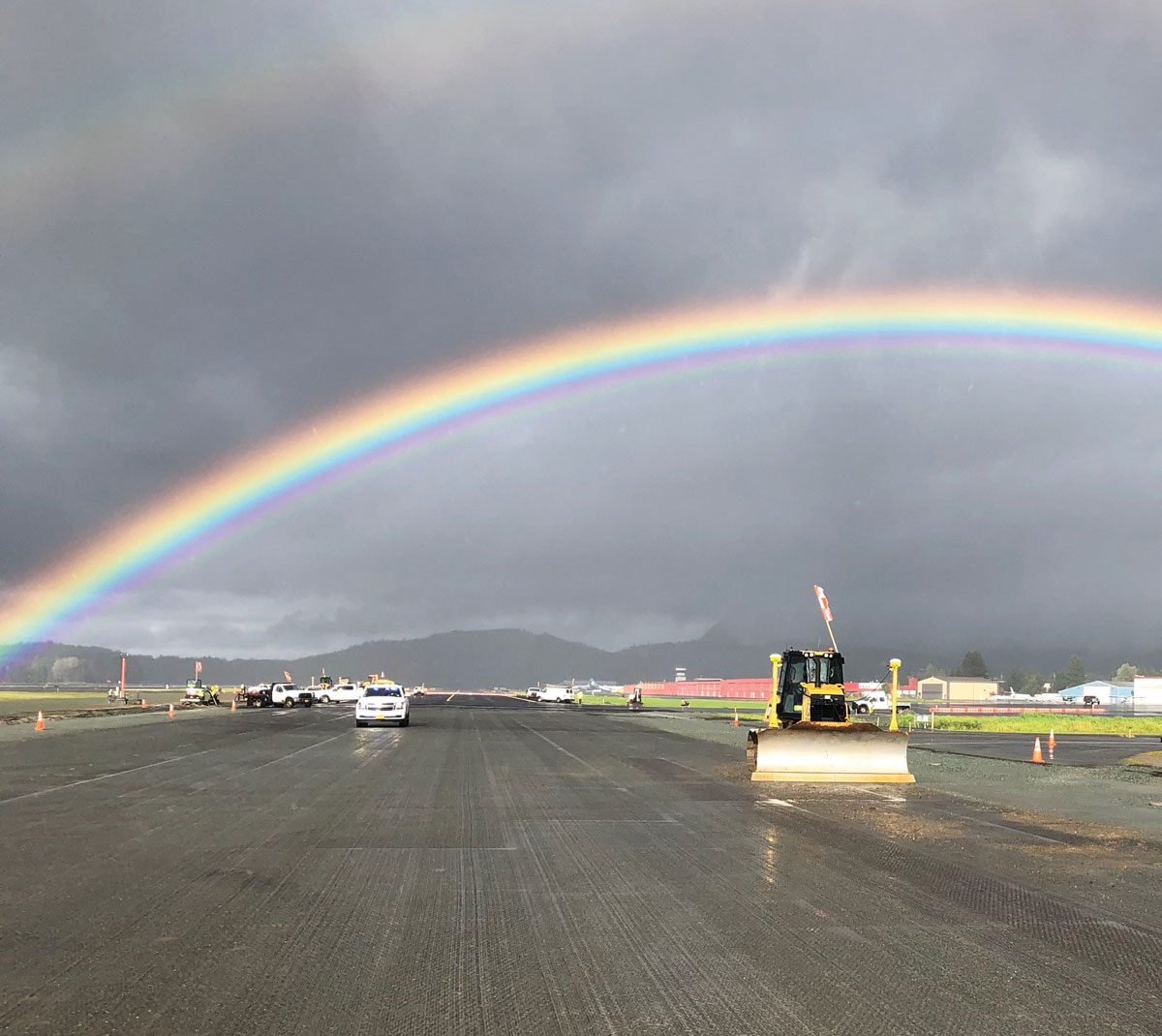
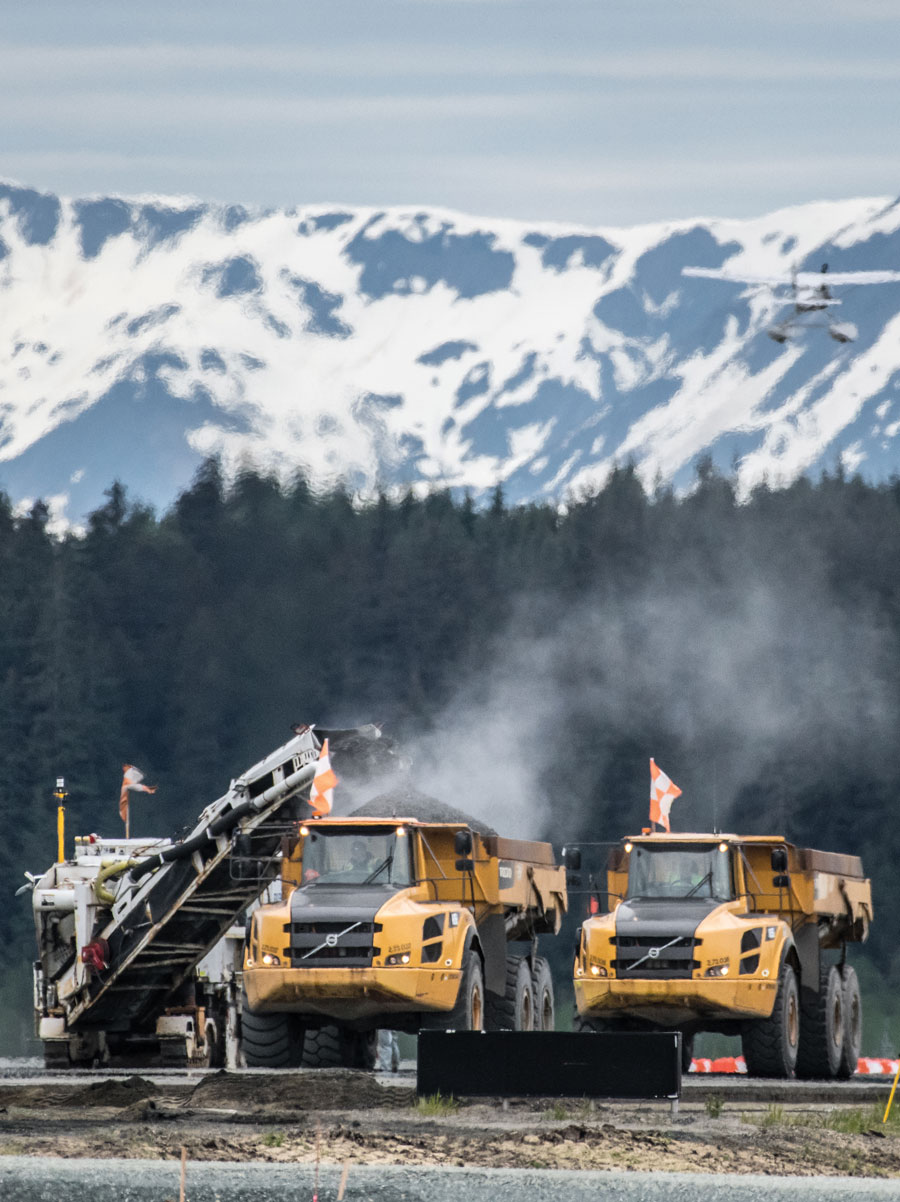
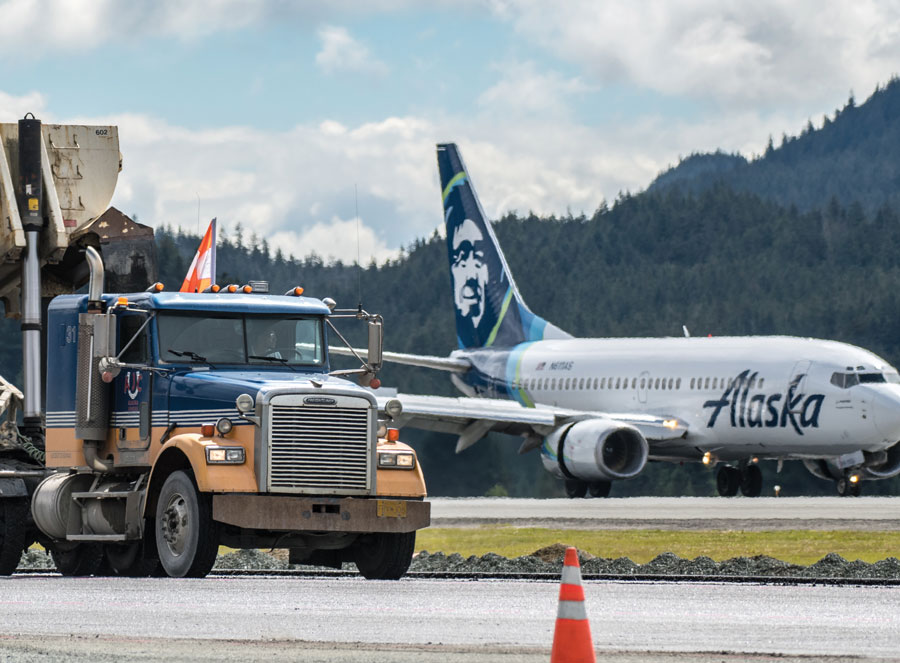
SECON bid the Juneau International Airport’s taxiway rehabilitation project as a two-year project. But due to the COVID-19 pandemic, air travel was significantly reduced and Juneau’s airport was quiet. After solving initial concerns about how to proceed with construction during the pandemic, SECON proposed to accelerate work and reduce the project completion time to one year. Despite a late project start due to frozen ground and ongoing impacts from an exceptionally wet season, SECON’s successful collaboration with the owner ensured the project was substantially finished, which will eliminate travel impacts next year when flights hopefully return to normal.
“It was no small amount of work—we’re all really tired, but how often does that happen? It’s nice to be able to provide your owner with something early,” says Bryce Iverson, a project engineer with SECON.
Iverson adds that finishing the work early allows the company to move into 2021 with more freedom to bid jobs, since this job is complete. He says SECON appreciates the Excellence in Construction competition.
“When you win awards, owners notice,” he says. “I’d like to thank AGC for holding the contest. It does provide the contractor with a reason for being proud of their work; we always strive to do a good job, but having an award to show for it is pretty special.”

Project: Western North Slope Mud Plant
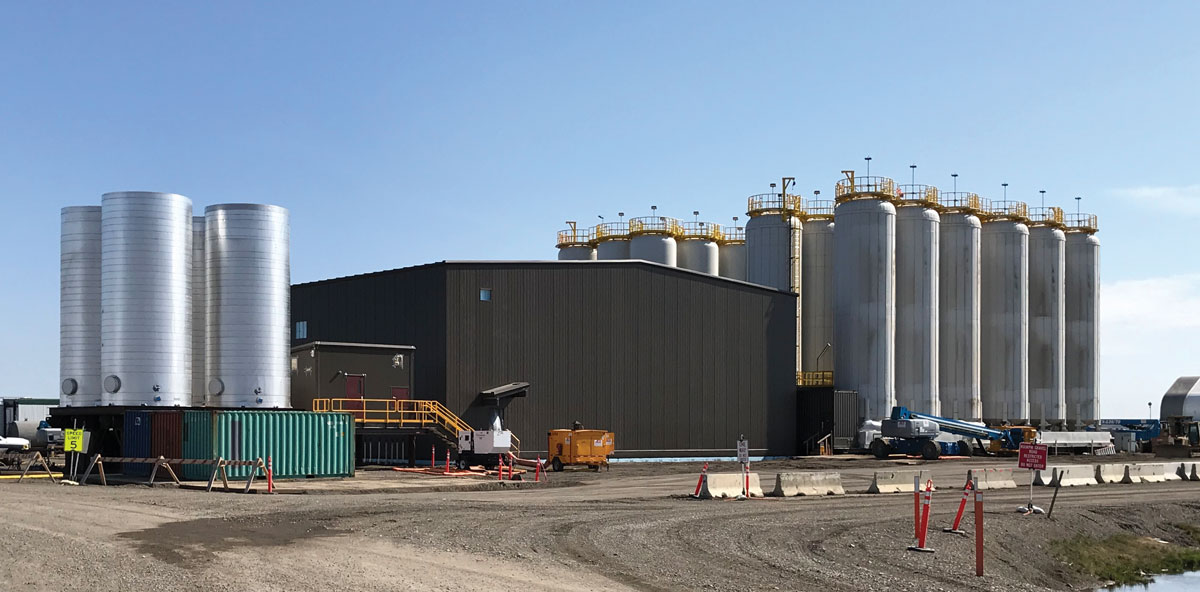
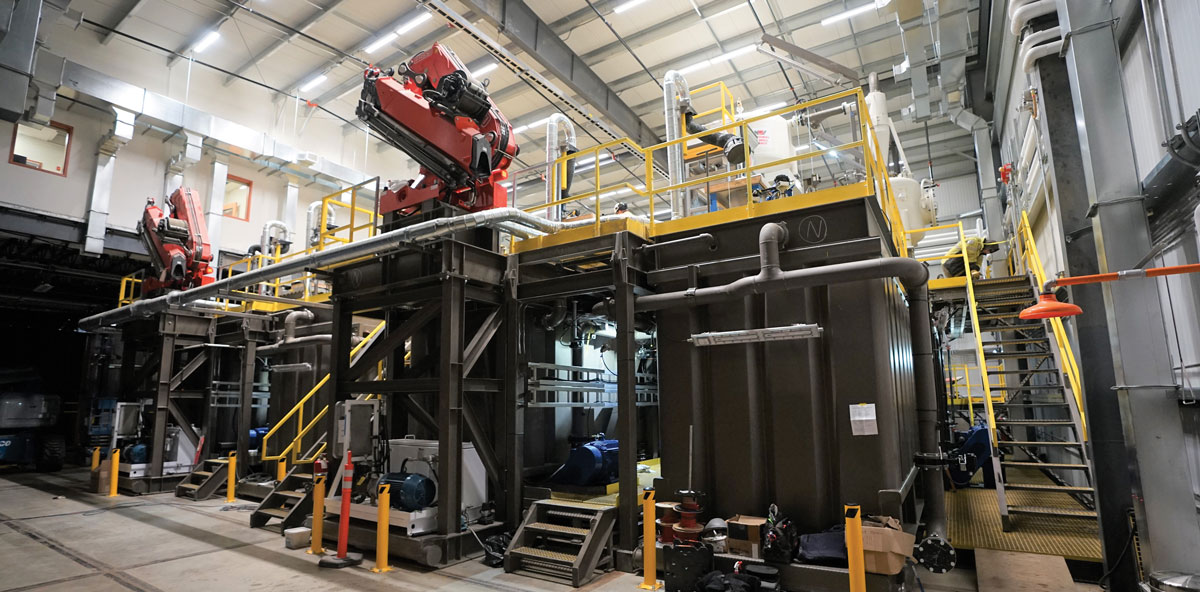

Project: Western North Slope Mud Plant

KLEBS Mechanical, Inc. served as a mechanical heating, ventilation, and air conditioning (HVAC) subcontractor for the Western North Slope Mud Plant, a facility designed to support one of the largest drilling rigs in the world, located in the sensitive ecosystem of the North Slope in Alpine, Alaska. KLEBS provided mechanical HVAC design assistance and installation services for this facility featuring four 500-barrel mix tanks, a mix-materials staging area, two high-speed overhead doors, two articulated arm cranes, mix process equipment on a grated mud-mix platform, offices and a laboratory, as well as training, locker and laundry rooms, a mechanical room, and support spaces.
“We are honored to be selected for this award and thank all our employees and the clients involved for the performance and success on this project. It is always a privilege to showcase an AGC Excellence in Construction award,” says KLEBS President and CEO Mike Klebs.

Project: Parks Highway Milepost 356-362 Bridges
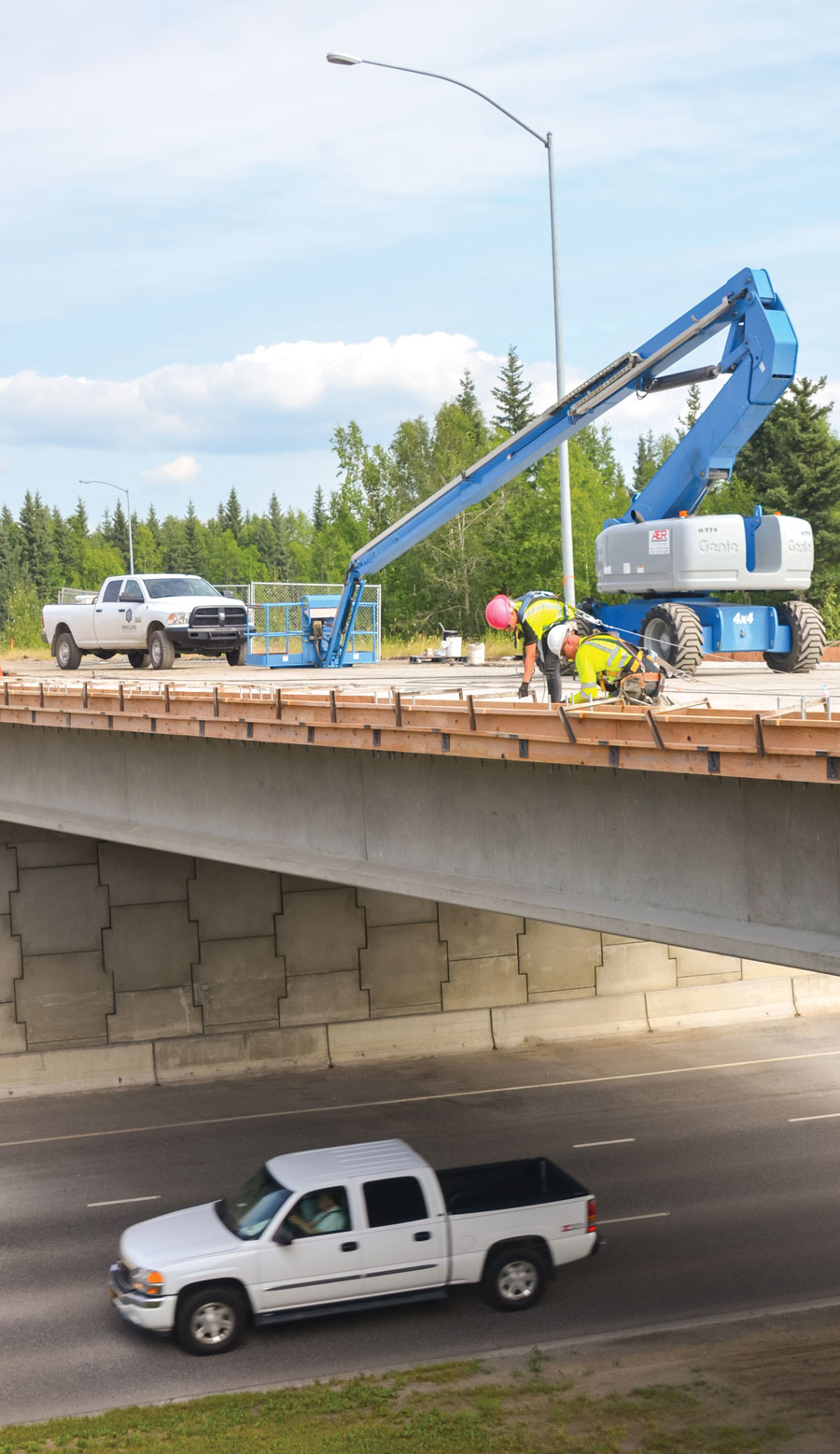


Swalling General Contractors completed the Parks Highway Milepost 356-362 Bridges project, which involved rehabilitating nine bridges in Fairbanks, as a major subcontractor to HC Contractors, on behalf of the Alaska Department of Transportation & Public Facilities. Work included removal of existing bridge rail; removal of existing bridge sidewalks and bridge curbs; replacement of two-tube bridge rail; replacement of three-tube bridge rail; replacement of pedestrian rail; repair of spalled bridge decks; shot blasting; and spray-down membrane on rehabilitated bridge decks. Structural upgrades were also performed on Bridge 1161 when inspections revealed an unexpected deficiency in girder performance.
“It was a really tough project that went all summer long. There were a lot of changes, a lot of unforeseen circumstances,” says Swalling General Contractors Operations Manager and Part-Owner Steve Rowe. “I think for the crew side of it, they’re always excited to see the awards after the fact. They’re the ones working hard all summer, and to have others recognize it is meaningful.”

Project: Cape Lisburne Seawall Reconstruction
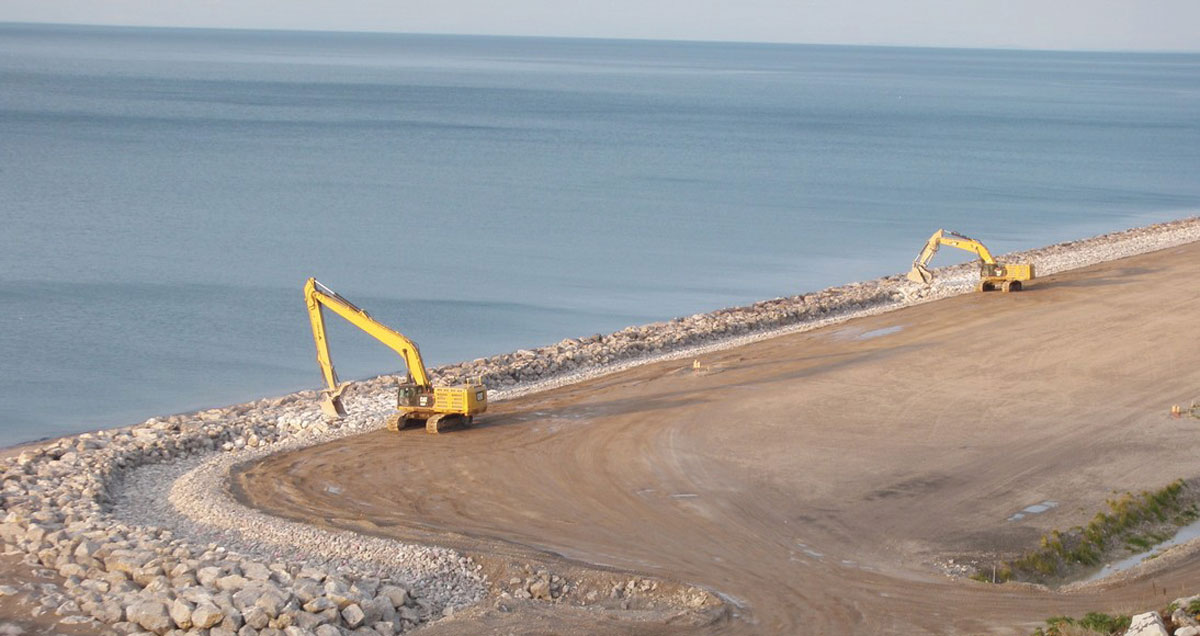
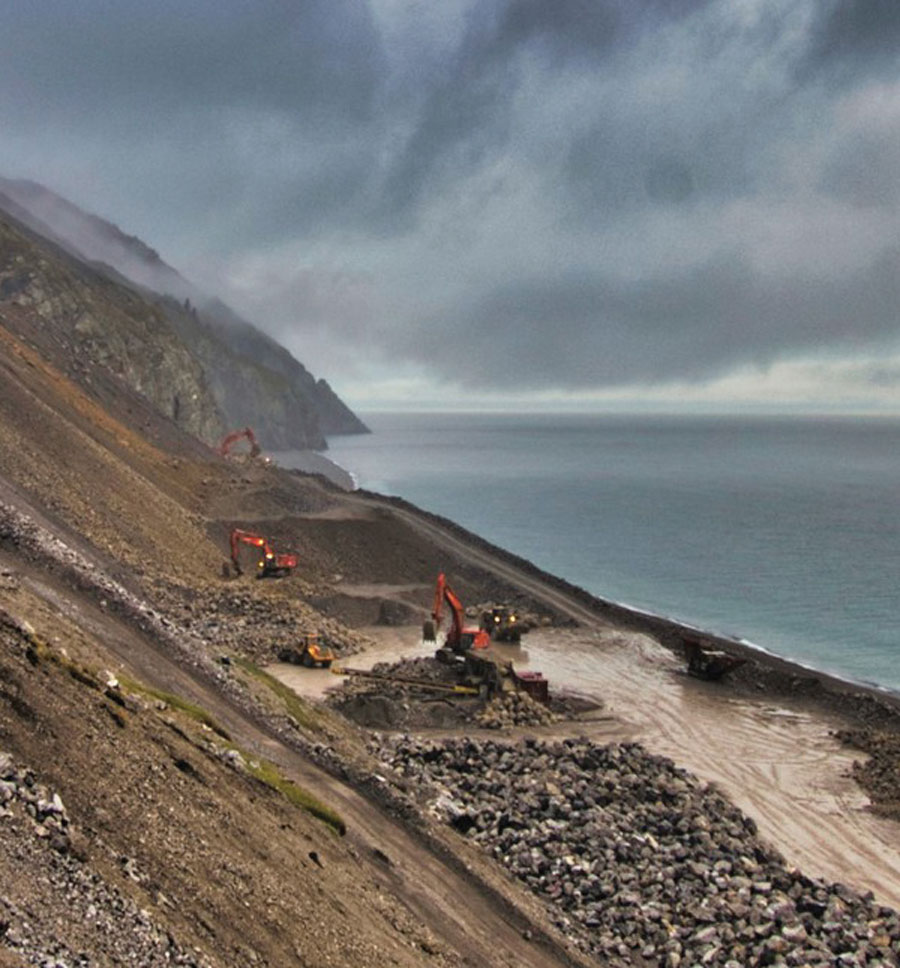


Orion rebuilt a 5,450 linear-feet seawall protecting a Defense Early Warning line (DEW-line) airfield and Long-Range Radar Site in Cape Lisburne, Alaska. Orion self-performed virtually all contract work, including seawall reconstruction, apron improvements, and on-site quarrying. During the execution of the project, Orion leveraged significant sustainability opportunities such as utilizing onsite materials, minimizing the project footprint, protecting local wildlife, and dealing with an unforeseen hazardous material encounter. Orion effectively tackled all issues it faced and integrated these sustainability elements into the work to complete the project ahead of schedule and with exceptional results for the government.
“Cape Lisburne was a challenging, five-year project in a remote part of Alaska. Orion is pleased to accept the award for Sustainability in Construction and would like to thank our employees, subcontractors, and the USACE for their efforts in completing the project on time and in a manner safe to the environment,” says Orion Marine Contractors Operations Manager Dave Banke.
